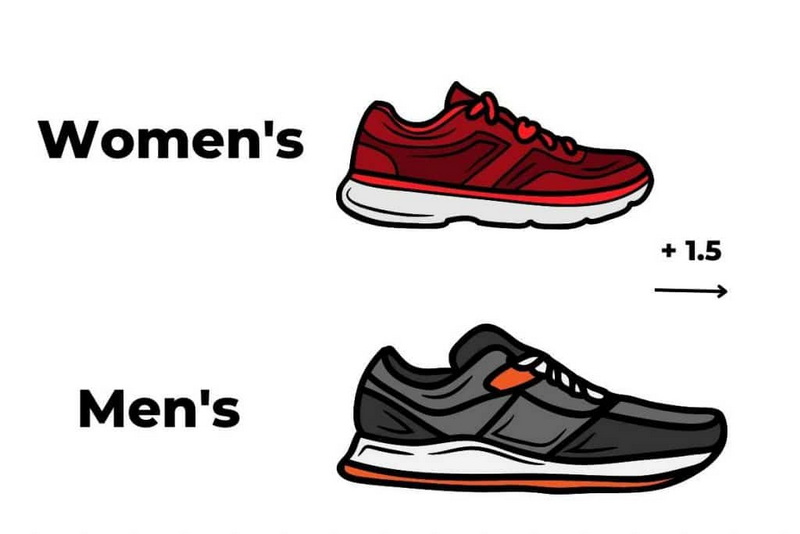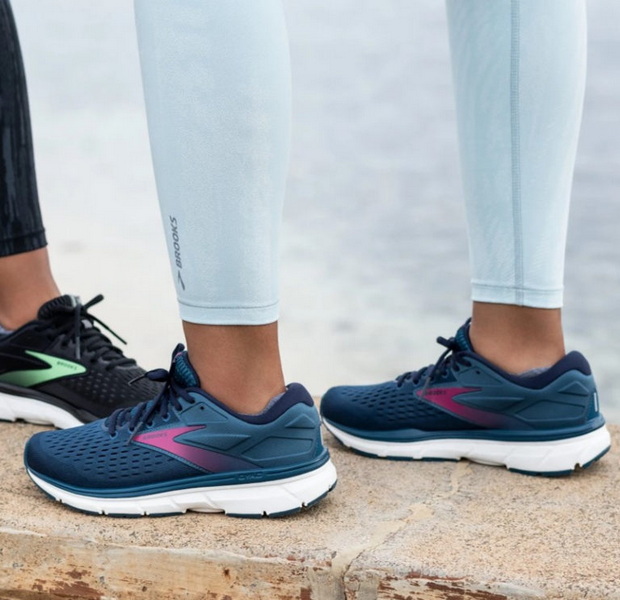Content Menu
● Size and Fit
● Design and Style
● Functionality
● Color and Aesthetics
● Price Points
● Cultural Influences
● Conclusion
● Frequently Asked Questions
>> 1. What are the main differences in shoe sizing between men and women?
>> 2. Why do women's shoes often have higher heels?
>> 3. Are there unisex shoe options available?
>> 4. How do cultural factors influence shoe design?
>> 5. What should I consider when choosing between men's and women's shoes?
When it comes to footwear, understanding the differences between men's and women's shoes is essential for both comfort and style. This article will explore the various aspects that differentiate men's and women's shoes, including size, design, functionality, and more. By the end, you will have a comprehensive understanding of why these differences matter and how they can affect your shoe choices.

Size and Fit
One of the most noticeable differences between men's and women's shoes is the size and fit. Men's shoes are generally larger and wider than women's shoes. For instance, a men's size 10 shoe is typically equivalent to a women's size 11.5 or 12. This difference in sizing is primarily due to the anatomical differences between male and female feet.
- Width: Men's shoes are designed to accommodate a broader foot, while women's shoes are narrower, particularly at the heel. This is important for ensuring a proper fit, as a shoe that is too wide can lead to blisters and discomfort, while a shoe that is too narrow can cause pinching and pain.
- Arch Support: Women often have a higher arch than men, which is why many women's shoes include additional arch support. This feature is crucial for comfort, especially in athletic and casual footwear.
- Sizing Systems: The sizing systems for men's and women's shoes can also differ significantly. In many countries, men's sizes are measured in whole and half sizes, while women's sizes may include additional increments. This can lead to confusion when shopping, especially online, where size charts may not always be clear.
Design and Style
The design and style of shoes also vary significantly between genders. Women's shoes often feature more diverse styles, colors, and embellishments compared to men's shoes.
- Heels: Women's shoes frequently include higher heels, which can range from a modest lift to stilettos. This design choice is often made for aesthetic reasons, as heels can enhance the appearance of the legs and add elegance to an outfit. In contrast, men's shoes typically have flatter soles, focusing on practicality and comfort.
- Fashion Trends: Women's footwear tends to follow fashion trends more closely than men's. This results in a wider variety of styles, including sandals, boots, and dress shoes that may incorporate unique patterns, colors, and materials. For example, during the spring and summer seasons, you might find a plethora of colorful sandals and open-toe shoes for women, while men's styles remain more subdued.
- Casual vs. Formal: While both men and women have casual and formal shoe options, women's shoes often blur the lines between these categories. For example, a pair of stylish flats can be worn in both casual and formal settings, whereas men's shoes are usually more distinctly categorized. This versatility in women's footwear allows for greater expression of personal style.
Functionality
The functionality of shoes is another area where men's and women's footwear diverges. This is particularly evident in athletic shoes.
- Running Shoes: Men's running shoes are designed with a focus on stability and support for a generally heavier frame. Women's running shoes, on the other hand, are lighter and often have more cushioning to accommodate a lighter body weight and different foot shape. This difference in design can significantly impact performance and comfort during physical activities.
- Hiking and Outdoor Shoes: When it comes to outdoor footwear, men's shoes are often built to withstand more rugged conditions, reflecting the typical use cases for men. Women's outdoor shoes may prioritize comfort and style, making them suitable for both hiking and casual wear. Additionally, many brands now offer unisex options that blend the best features of both designs.
- Specialized Footwear: Certain activities require specialized footwear that is designed specifically for men or women. For instance, cycling shoes for men may have a stiffer sole for better power transfer, while women's cycling shoes might focus on comfort and fit. Understanding these nuances can help you choose the right shoe for your specific needs.
Color and Aesthetics
Color choices in footwear also reflect gender differences. Women's shoes are available in a broader spectrum of colors and patterns, often featuring bright hues and floral designs. Men's shoes, however, tend to stick to more neutral colors like black, brown, and navy, which are considered more versatile and classic.
- Seasonal Trends: Women's shoes often reflect seasonal trends more prominently, with styles changing rapidly to keep up with fashion. Men's shoes, while they do have seasonal variations, generally maintain a more consistent style over time. This can be seen in the way women's shoes may incorporate seasonal colors, such as pastels in spring or rich tones in fall.
- Customization: In recent years, there has been a rise in customizable footwear options, allowing consumers to choose colors, materials, and even designs. This trend has been particularly popular among women's shoes, where personalization can reflect individual style and preferences.

Price Points
Another factor to consider is the price point of men's and women's shoes. While this can vary widely based on brand and style, women's shoes often come with a higher price tag due to the fashion-forward designs and materials used. Additionally, the market for women's shoes is larger, leading to more competition and variety, which can also influence pricing.
- Quality vs. Cost: It's important to note that while women's shoes may be priced higher, this does not always correlate with quality. Many men's shoes are also available at premium prices, especially those designed for specific sports or activities. Consumers should consider the quality of materials and construction when making a purchase, regardless of gender.
- Sales and Discounts: Shopping habits can also differ between genders, with women often more likely to take advantage of sales and discounts. This can lead to a perception that women's shoes are more expensive, even if men's shoes are similarly priced during regular sales.
Cultural Influences
Cultural factors play a significant role in the design and marketing of men's and women's shoes. In many cultures, footwear is not just a practical item but also a status symbol. This can lead to differences in how shoes are marketed and perceived based on gender.
- Advertising: Women's shoes are often marketed with an emphasis on style and fashion, while men's shoes are marketed more on functionality and durability. This reflects broader societal norms about gender and appearance. Advertisements for women's shoes may feature models in glamorous settings, while men's ads might focus on performance in rugged environments.
- Social Expectations: Cultural expectations can also influence the types of shoes that are deemed appropriate for different occasions. For example, women may feel pressured to wear heels to formal events, while men might be expected to wear dress shoes. These societal norms can impact purchasing decisions and personal style choices.
Conclusion
In summary, the differences between men's and women's shoes are multifaceted, encompassing size, design, functionality, color, pricing, and cultural influences. Understanding these differences can help consumers make informed choices when selecting footwear that not only fits well but also meets their style and functional needs.
As you shop for shoes, consider these factors to ensure you choose the right pair for your lifestyle. Whether you prioritize comfort, style, or functionality, knowing the distinctions between men's and women's shoes will enhance your shopping experience and help you find the perfect fit.

Frequently Asked Questions
1. What are the main differences in shoe sizing between men and women?
Men's shoes are generally larger and wider than women's shoes. A men's size 10 typically corresponds to a women's size 11.5 or 12. Additionally, women's shoes often have a narrower fit, especially at the heel.
2. Why do women's shoes often have higher heels?
Higher heels in women's shoes are primarily designed for aesthetic purposes, as they can enhance the appearance of the legs and add elegance to an outfit. However, they can also affect comfort and stability.
3. Are there unisex shoe options available?
Yes, many brands now offer unisex shoe options that combine the best features of both men's and women's designs. These shoes are often designed to fit a wider range of foot shapes and sizes.
4. How do cultural factors influence shoe design?
Cultural factors play a significant role in how shoes are designed and marketed. Women's shoes are often marketed with an emphasis on style, while men's shoes focus more on functionality. Societal norms can also dictate what types of shoes are considered appropriate for different occasions.
5. What should I consider when choosing between men's and women's shoes?
When choosing between men's and women's shoes, consider factors such as fit, comfort, style, and the specific activity for which you need the shoes. It's essential to try on different styles and sizes to find the best fit for your feet.

















